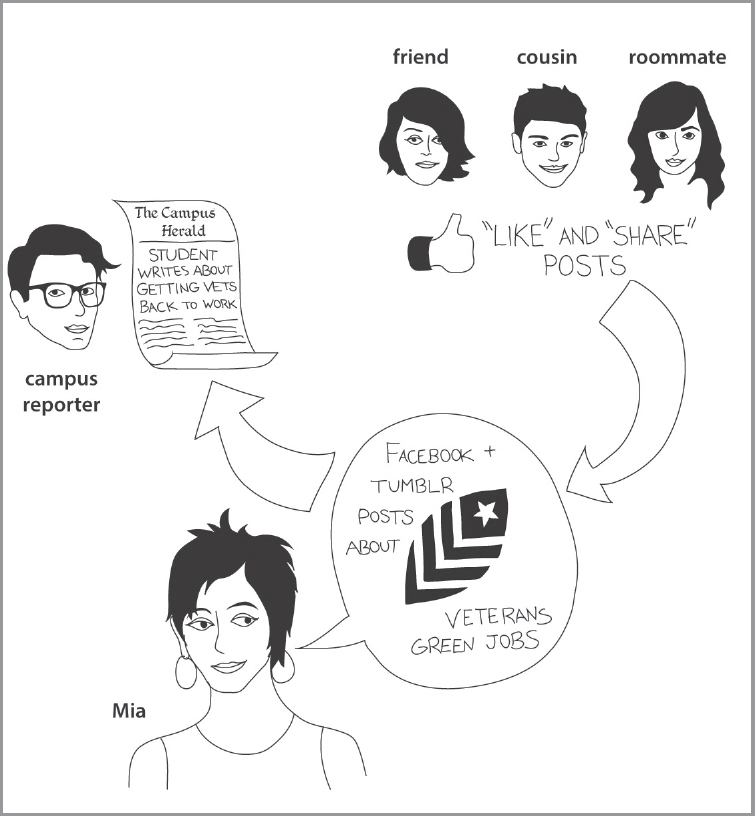Conversations Help You Share Information, Ideas, and Arguments
Much like a spoken conversation, a written conversation involves an exchange of information, ideas, and arguments among readers and writers. Instead of spoken words, however, the people engaged in the conversation communicate through written documents. Just as most people listen to what’s being said before contributing to a conversation, most writers begin the process of writing about a topic by reading.
After they’ve read about a topic, most writers reflect on what they’ve learned and search for something new to offer to the other members of the conversation. Then they contribute to the conversation by writing their own document. In turn, that document will be read by other participants in the conversation. If these participants are interested, concerned, or even offended by what another writer has added to the conversation, they might write their own documents in response. In this sense, a conversation among writers and readers becomes a circular process in which the information, ideas, and arguments shared through documents lead to the creation of new documents.
Consider the experiences of Mia Jackson, a college student taking a first-year writing course at a community college in the Colorado Springs area. Since the college is near a large military base and many members of the campus community have connections to the military, Mia’s instructor decided to focus the first major assignment on veterans’ issues. Mia wanted to investigate the experiences of veterans who had returned from the wars in Iraq and Afghanistan. She knew from news reports and personal experience — two of her cousins and a close friend from high school had served in the wars — that the return to the United States could be far from smooth. But she didn’t know how widespread the challenges were. To learn more, Mia started to listen in on written conversations about the issue, reading articles, news reports, and blogs. Some of what she read was written by veterans themselves. Other sources were written by journalists or by people who hoped to help them. Mia found herself drawn to discussions of employment for veterans and began to focus her reading on discussions of “green” jobs, or jobs that help the environment. Eventually, she would write an analytical essay that responded to what she had read.
After reading widely about the issue of green jobs for veterans, Mia realized that she wanted to encourage others to support efforts to train veterans for these jobs. She decided to share her ideas with friends and family, as well as with others who were interested in the issue. To get started, she posted on Tumblr and shared her post on Facebook. Some of Mia’s friends responded by posting comments on her Facebook page. Some “liked” her Tumblr posts and shared them with their friends. Eventually, a student reporter for her college newspaper commented on her ideas in an article about green jobs in Colorado.
You can see conversational exchanges among readers and writers in a number of contexts. Articles in scholarly and professional journals almost always refer to previously published work. Similarly, in the letters-to-the-editor section of newspapers and magazines, you’ll frequently see references to earlier letters. You can even see this process in writing classes. As writers share their work with classmates and instructors, they receive feedback that often leads to important changes in their final drafts. In turn, as writers read the work of their classmates, they often refine their thinking about their own writing projects.
For a closer look, click on each image to enlarge it.


As you work on your own writing projects, keep in mind the circular nature of written conversations. Remember: just as when you join a group of friends who are chatting at a party, you’ll be entering a situation in which others have already contributed their observations and ideas to the conversation. Your contribution should build on what has already been written. In turn, other members of the conversation will read what you’ve written and build on the ideas, information, and arguments you’ve shared with them.